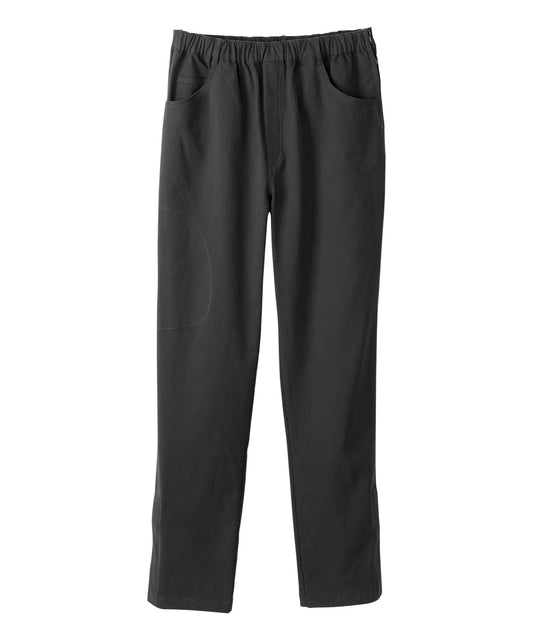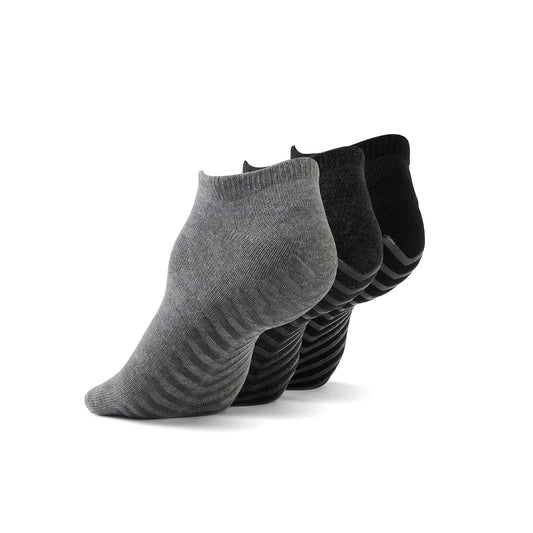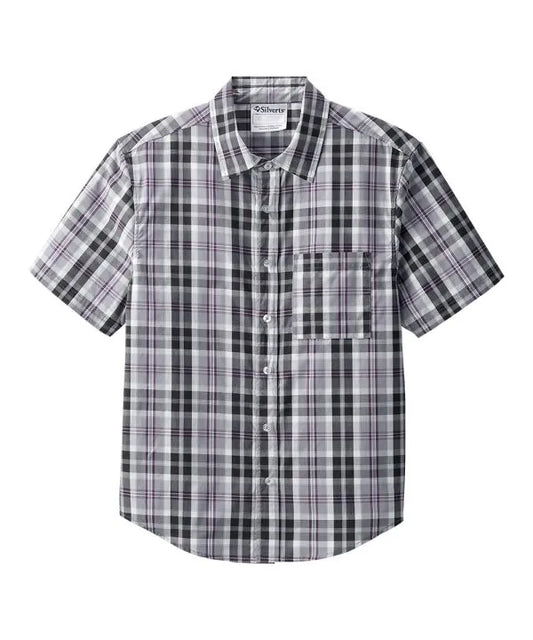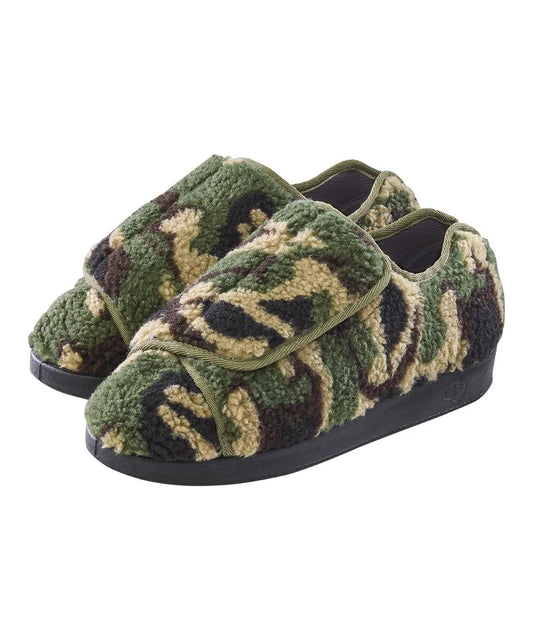By Zarif Ahmed
When it comes to everyday independence, few things are as underrated as the clothes we wear. Getting dressed is one of those routines we don’t think twice about—until it becomes difficult. Whether it’s due to aging, illness, surgery, or a lifelong disability, clothing can either help people feel confident and in control or become one more source of daily frustration.
Adaptive clothing has changed the game. And the best designs aren’t just easier—they’re smarter, more stylish, and made with dignity in mind. These ten innovations are already making life easier for thousands, and once you know about them, you’ll wonder why they weren’t everywhere sooner.
Why are magnetic closures still not on everything?
Imagine never having to deal with tiny buttons again. Magnetic closures snap into place with little effort, making dressing easier for anyone with limited hand mobility, tremors, or arthritis.
They look like regular buttons or zippers, but the ease is life-changing. Stroke survivors, Parkinson’s patients, and people recovering from surgeries have all praised magnetic closures for giving them back a bit of daily independence.
Clothing with magnetic closures also reduces stress for caregivers who assist with dressing routines. The simplicity of use and clean design make them a natural choice—yet they’re still rare in most mainstream clothing. Why? Possibly because adaptive wear is still catching up with inclusive design.
But the tide is changing, and brands like June Adaptive are leading the way.
Take, for instance, the Women’s Magnetic Zipper Active Jacket. Designed for ease without compromising style, this jacket allows users to zip up using one hand, thanks to a front magnetic closure. One June Adaptive customer, recovering from a rotator cuff injury, said it was the first jacket she could wear on her own post-surgery. “It sounds small,” she wrote, “but being able to get myself dressed without help made me feel human again.”

Magnetic closures empower users to reclaim that moment of independence most of us take for granted. Whether it's heading to therapy, running errands, or just stepping outside, the impact goes beyond convenience—it’s confidence in a zip.
Sensory-friendly fabrics: How soft is too soft?
For people with sensory sensitivities, fabrics are everything. A scratchy tag, rough seam, or stiff cuff can ruin an entire day. That’s why sensory-friendly clothing—designed with ultra-soft fabrics, seamless interiors, and tagless labels—is a quiet revolution in comfort.
These garments aren’t just for people on the autism spectrum. Seniors with thinning skin, individuals in recovery, or anyone sensitive to texture can benefit from breathable, gentle materials that don’t irritate.
Materials like bamboo, brushed cotton, and modal blends are now being used in adaptive tops, pajamas, and even base layers. Sensory-friendly design is about more than comfort; it’s about mental well-being and peace of mind.
Sensory-friendly clothing isn’t just about softness. It’s about eliminating every source of irritation—starting with the details. Tags, for example, may seem minor, but for people with sensory processing disorders or sensitive skin, they can be unbearable.
That’s why many adaptive brands are now going tagless and designing clothes with flat, seamless stitching. No raised seams rubbing against skin. No itchy labels. Just thoughtful design that feels invisible when worn.
Even care instructions are being printed directly onto fabric or added discreetly in less abrasive places. These subtle choices make all the difference, especially for children, neurodivergent adults, or aging individuals with fragile skin.
Parkinson’s-friendly shirts: Can they outsmart shaky hands?
Dressing with Parkinson’s isn’t just frustrating—it can be exhausting. Hands that tremble or freeze don’t cooperate with traditional buttons, zippers, or small sleeve openings.
That’s why Parkinson’s-friendly shirts, like those with magnetic closures or wide-neck openings, are designed to eliminate struggle. Shirts with Velcro plackets and stretch panels allow for easy dressing without sacrificing appearance.
One caregiver described the difference after switching her father to an adaptive shirt: “He dressed himself for the first time in months. That moment changed everything for him.”
This kind of clothing turns an obstacle into an opportunity—restoring dignity and autonomy, one outfit at a time.
While adaptive shirts are designed to encourage independence, they also transform the experience for people who receive help with dressing. For caregivers and healthcare workers, every second saved and every struggle avoided makes routines smoother and more respectful.
Adaptive tops with back overlaps, shoulder snaps, or side openings allow dressing to happen with minimal movement or discomfort for the wearer. This is especially helpful for those in post-stroke recovery or with limited upper body mobility.
Instead of tugging or lifting arms, the process becomes gentle, seamless, and affirming. Dignity isn’t just about doing it alone—it’s about how you’re treated when you need support.
Parkinson’s-friendly clothing isn’t limited to shirts. Adaptive undershirts, soft pullovers, and jackets with magnetic or Velcro closures all help maintain independence as symptoms progress. Some even include wide armholes or drop-shoulder seams to reduce resistance when raising arms. For people with fluctuating mobility throughout the day, having adaptive layers that can easily be removed or added is essential. It’s not just about convenience—it's about creating clothing that responds to the body, rather than forcing the body to adapt to the clothing.
Side-zip jeans: The secret weapon for bad knees (and lazy Sundays).
Whoever said jeans can’t be comfortable never tried adaptive side-zip denim. These jeans feature long zippers that run down one or both sides, making them easy to step into while sitting, or to slide on over braces, casts, or swollen joints.
They’re also ideal for people recovering from knee surgery or living with arthritis. Elastic waistbands and pull-on styles make them feel more like loungewear, but with a polished, wearable look.
Plus, let’s face it: even people without mobility challenges want jeans that don’t feel like a wrestling match. Side-zips are a design win for everyone.
We often focus on coats and tops when thinking about adaptive wear, but bottoms deserve equal attention. Pants are one of the most difficult items to put on, especially for individuals who are seated, recovering from surgery, or living with chronic pain.
Adaptive pants with full side zippers or open-back designs are not only easier to put on—they’re safer, too. People with limited mobility don’t have to stand or shift awkwardly during dressing, reducing the risk of falls.
Take the Unisex Recovery Pants with Side Zippers from June Adaptive. Designed with caregivers and seated wearers in mind, they offer warmth, flexibility, and dignity. Paired with adaptive socks and slip-on shoes, these pants complete a winter-ready, frustration-free outfit.

Comfort isn’t just a bonus. For many people, it’s the difference between facing the day—or not.
One occupational therapist shared how side-zip pants changed her client’s dressing routine from 15 minutes of frustration into a quick, pain-free process. “We used to avoid outings just because it was too hard to get dressed,” she said. “Now he gets ready on his own.” This isn’t just about style—it’s about freedom of movement, personal agency, and quality of life. Clothing choices shouldn’t be what limits someone from participating in the world around them.
Wait, adaptive clothing can actually look cool now?
Gone are the days when adaptive clothing looked like it was borrowed from a hospital closet. Today’s inclusive fashion is designed to blend in, not stand out.
Modern adaptive pieces come in trendy cuts, seasonal colors, and flattering shapes that work for all body types. Whether it’s a flannel-lined jacket with hidden Velcro or a magnetic dress shirt that looks boardroom-ready, adaptive fashion has entered the style chat.
Take the Men’s Magnetic Zipper Hoodie from June Adaptive. With its athletic cut, soft fabric, and easy magnetic zipper, it bridges the gap between everyday wear and functional design. It’s a hoodie you’d wear to a café or physical therapy—no one would guess it’s adaptive. One customer described it as "the first piece of adaptive clothing that actually matched my style."

Another standout is the Women’s Reversible Front Vest with Magnetic Closure, which brings both fashion and function to the forefront. The vest features a sleek, modern silhouette with the added convenience of magnetic front closures, making it ideal for anyone who struggles with traditional fasteners. Its reversible design offers two looks in one—versatility without the hassle. It’s a favourite among caregivers and wearers alike for layering during transitional weather or indoor comfort.

Younger customers, in particular, have made it clear: accessible design shouldn’t mean sacrificing personal style. And the best part? You don’t have to shop in a separate category. With brands like June Adaptive, stylish adaptive pieces are front and center.
These designs aren’t gimmicks—they’re thoughtful, functional, and in many cases, long overdue. And for those who rely on them, they’re not just clothing. They’re confidence, independence, and comfort rolled into every seam.
Whether you're caring for a loved one, dressing post-surgery, or simply want more ease in your day-to-day routine, adaptive clothing is no longer an afterthought. It's the future of fashion, and it looks good on everyone.
Explore the full collection of adaptive apparel and see these game-changing designs in action at JuneAdaptive.com.















